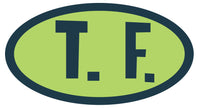“We die of cold, and not of Darkness” –Unamuno

Hey–
One of my heroes in the poetry world is Mark Turcotte, the Chippewa poet and author of Exploding Chippewas. I don’t know a lot about Native American history, but he does. Every time I’m not sure of my facts when writing about the American Indian, I call Mark; he knows everything. He is a student and keeper of this history; a Chippewa griot and the closest thing I regard to a holy man. He has been very blunt with me about the history of American Indian tribes. He has told me that the white man was not the first keeper of slaves on this continent, nor was genocide unknown to this land before Whitey get here.
He is honest, bold, lyrical and sometimes too damned honest for his own good. Mark is his own man and he brooks no bullshit when it comes to the story of his people. I’ve read a great deal about homelessness in America and hobos and the people who were displaced in the expansion of America and nobody got hustled like the Native American. Nelson Algren used to bait the “America First” crowd with the statement that we lived as a body politic on stolen property. That every street, every corner, every fruited plain, had the air of larceny about it. Of course Algren, like my friend Mark Turcotte, was another guy who was too damned honest for his own good.
Years ago, I became fascinated by Kachina dolls, which are made by many Native American tribes, and they range from being genuine medicine to being knickknacks they sell to the tourists like cactus-candy. I have one that is a Navajo fetish and that’s not quite right–it rather has me. I’ve looked at it for over 20 years and it is still a mysterious, searching kind of presence in my life. It is totemic and loaded with a language that has never been written down.
It occurs to me that scarecrows are kind of white men’s totems. They send a certain message that is not about scaring birds, but rather, property; as in, “this is mine, go away,” rendered in pagan, throw-away sticks and cloth. They are totems of ill-will and ownership of landscape.
As Americans, we think of such symbolism as quaint, arcane, or worse yet, as nostalgia.
We attach sentimental ennui to old talismans like the much-loved cartoon, “Injun Summer” with no thought of the grievous and genocidal injury we did to a whole culture. In my darker moments of making this book, I’ve thought that America is, at its base, the culmination of the best efforts of the most successful murderers in human history.
Tony
